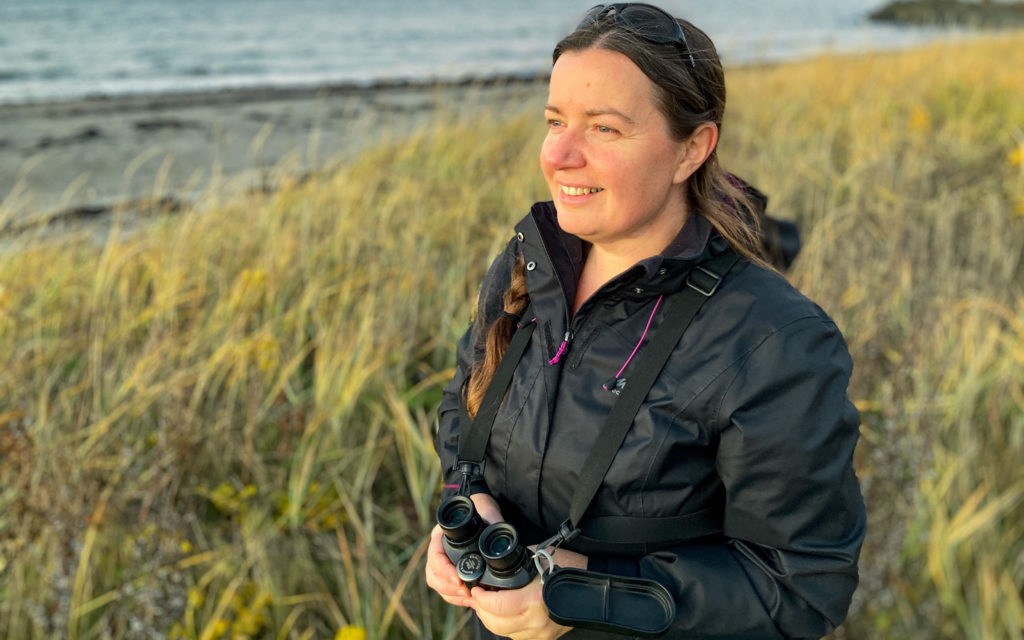
Pictured here: Laura McKinnon
Research – the kind that has put York University on the map in Canada and around the world – advances knowledge, creates positive change and puts our students on career trajectories where they can make a difference in their communities. But what do you do when a global pandemic gets in the way of that research? If you’re Glendon Campus Biology Professor Laura McKinnon, you make students practice doing research in their own backyards – literally.
McKinnon’s course, “Ecological Monitoring in an Urban Environment,” is a 12-day mandatory course that is part of the Ontario Universities Program in Field Biology. In most years, students spend this time banding birds, searching for killdeer nests and visiting a turtle-marking program. Much of this work is normally done throughout the extensive Toronto ravine system.
However, because of the pandemic lockdown, McKinnon’s students couldn’t go out into the field, so McKinnon brought the field to them. She created an online course where research took place in each individual student’s backyard.
To support students in their work – and to make sure they had the equipment necessary for fieldwork – McKinnon restricted her course to 10 students, rather than the usual 20. She made sure each student had green space to use and then invited them to pick up their field kits, which included binoculars, a field notebook, field guides, a Berlese funnel, a dissecting scope and bioacoustic monitors.
McKinnon’s modified course took place over two weeks. The first week taught the techniques students would need to conduct research in their own backyards, such as learning to take field notes, identifying birds and conducting a point count of birds in the yard. McKinnon held separate sessions on scientific writing, bioacoustic monitoring for bird calls/songs and bats, and statistics. The second week of the course was devoted to the research itself. Pairs of students worked on research projects together.
“Having mastered sampling techniques in the fields of ornithology, mammalogy, entomology and botany, each student became the principal investigator of their own field site, collecting data according to standard ecological protocols, and contributing these data to the larger network of eight field sites across Toronto,” McKinnon said. “That these field sites were the students’ backyards did not detract from their ability to conduct scientific research projects on fundamental ecological questions in urban ecology.”
In fact, the students were very busy. They were up at dawn to conduct backyard point counts of their birds and did so again at dusk. At 8 a.m., the class met online to share their findings and discuss their approaches.
One team of students measured minimum and maximum call frequencies (Hz) of American Robins over the 10-day period of data collection. They also measured ambient levels of man-made noise. Then they tested whether the birds changed the frequency of their calls to compensate for increased noise in busier urban areas.
“In discussing their results, the students can draw upon the theories they’ve learned about in their ecology courses,” McKinnon said. “Although their findings are on a small scale and can’t be published, there were some good ideas to pursue.”
